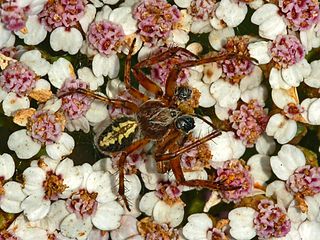 W
WAculepeira ceropegia, the oak spider, is an orb-weaving spider species belonging to the family Araneidae.
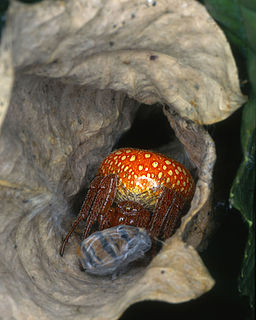 W
WThe strawberry spider or orange wheelweaving spider is a species of the orb-weaving spider family, Araneidae.
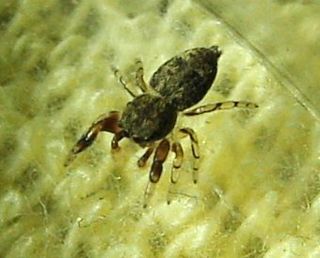 W
WBallus chalybeius is a jumping spider. It is the type species of the genus Ballus.
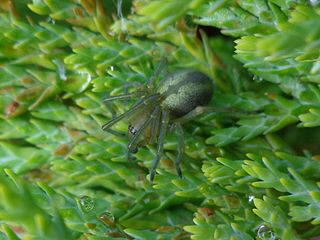 W
WCheiracanthium erraticum, the two-clawed hunting spider, is a species of Palearctic spider of the family Cheiracanthiidae.
 W
WClubiona corticalis, the bark sac spider, is a species of spider belonging to the family Clubionidae.
 W
WDysdera erythrina is a species of spider in the family Dysderidae. It is nearly indistinguishable from the spider Dysdera crocata, but is far less common and has a much smaller geographic range. Like its relative D. crocata, this spider uses its disproportionately huge chelicerae to kill woodlice, as well as silverfish, earwigs, millipedes, beetles, and even centipedes.
 W
WThe hobo spider is a member of the genus of spiders known colloquially as funnel web spiders, but not to be confused with the Australian funnel-web spider. Individuals construct a funnel-shaped structure of silk sheeting and lie in wait at the small end of the funnel for prey insects to blunder onto their webs. Hobo spiders sometimes build their webs in or around human habitations. The hobo spider lays its eggs in September and they hatch during late spring. After the male hobo spider mates it then dies.
 W
WEro aphana is a species of pirate spider in the family Mimetidae. It is a hunting spider and feeds on other spiders.
 W
WGibbaranea bituberculata is a species of 'orbweavers' belonging to the family Araneidae, subfamily Araneinae.
 W
WGnaphosa lucifuga is a ground spider species with Palearctic distribution.
 W
WHeliophanus cupreus, the copper sun jumper, is a species of jumping spider belonging to the family Salticidae.
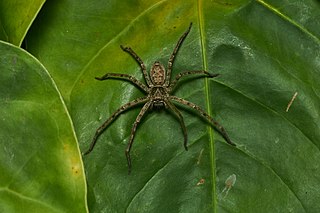 W
WHeteropoda venatoria is a species of spider in the family Sparassidae, the huntsman spiders. It is native to the tropical regions of the world, and it is present in some subtropical areas as an introduced species. Its common names include giant crab spider, or cane spider.
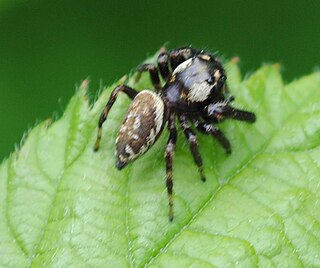 W
WMacaroeris nidicolens is a species of jumping spider that occurs from Europe to Central Asia.
 W
WMangora acalypha is a species of spider in the family Araneidae, found throughout the Palearctic realm.
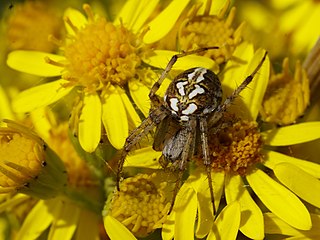 W
WNeoscona adianta is a species of spider belonging to the family Araneidae. It occurs in North Africa and Europe to Central Asia.
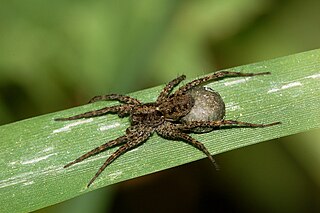 W
WPardosa lugubris is a wolf spider species with Palearctic distribution.
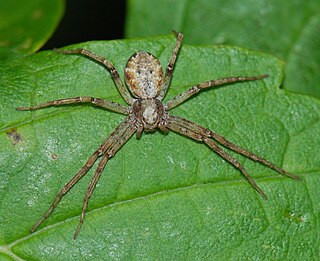 W
WPhilodromus cespitum is a species of running crab spider in the family Philodromidae. It is found in North America, Europe, North Africa, and parts of the Middle East and Asia. P. cespitum is a foliage-dweller, and is the most abundant species found in European fruit orchards. It acts as a biological control by preying on orchard pests. Multiple studies have been conducted looking at the effects of insecticides in fruit orchards on this species. P. cespitum is a diurnal ambush hunter and preys on aphids, insects, and occasionally competitor spider species. Males court females by tapping on the females’ bodies with their forelegs. They then insert a genital plug into the female during copulation. Unlike in many other spider species, subsequent males can mate with plugged females by removing part of the plug prior to copulation. Males discriminate among females based on virginity and plug size, and can determine these factors using the females’ draglines and plug samples.
 W
WPlatnickina tincta is a tangle web spider species with Holarctic distribution. It is notably found in Lithuania.
 W
WScytodes thoracica is a spitting spider, so called because it spits a venomous sticky silken substance over its prey. Its size ranges between 3–6 mm (0.12–0.24 in). The carapace is unusual in sloping upwards towards its rear end, whereas the abdomen slopes downwards.
 W
WThe triangulate cobweb spider is a common spider in the genus Steatoda. It is well known for the triangle-shaped pattern on the dorsal side of its abdomen.
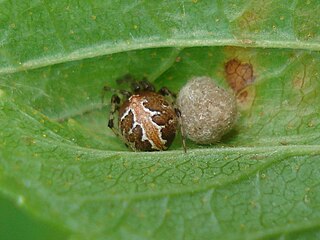 W
WTheridion pictum is a species of cobweb spider in the family Theridiidae. It is found in the United States, Canada, Europe, and Turkey. It is the type species of the genus Theridion.
 W
WTibellus oblongus is a spider with a Holarctic distribution.
 W
WZilla diodia is an orb-weaver spider species found from Europe to Azerbaijan.